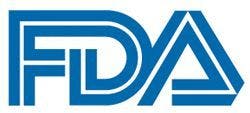Enrollment to the phase 3 MANIFEST-2 trial, which is examining the safety and efficacy of pelabresib plus ruxolitinib vs ruxolitinib alone in patients with JAK inhibitor–naïve myelofibrosis, has completed and topline findings are anticipated by the end of 2023.
The multicenter, double-blind, placebo-controlled, trial enrolled patients with primary, post–polycythemia vera, or post–essential thrombocytopenia myelofibrosis who were at least 18 years of age, had advanced disease requiring therapy, splenomegaly by computed tomography or magnetic resonance imaging, were symptomatic, and had a prognostic risk-factor score of intermediate-1 or higher per the Dynamic International Prognostic Scoring System (DIPSS).2,3
After a screening period that lasted for up to 28 days, participants were randomly assigned 1:1 to receive ruxolitinib plus oral pelabresib or matched placebo daily for 14 consecutive days, followed by 7 days off treatment.1 Pelabresib had a starting dose of 125 mg daily, with additional dose increases allowed in accordance with trial protocol. Ruxolitinib was given in twice-daily doses of 10 mg or 15 mg based on baseline platelet counts for all 21 days of each cycle; again, dose increases were allowed per protocol criteria.
Treatment was continued until progressive disease and withdrawal of treatment. Notably, those in the control arm who experience disease progression following 24 weeks of treatment are allowed to crossover to receive the pelabresib doublet.
Patients were stratified based on DIPSS risk category (intermediate-1 vs intermediate-2 vs high), platelet count (>200 x 109/L vs 100 to 200 x 109/L), and spleen volume (≥1800 cm3 vs <1800 cm3).3
The primary end point of the trial is the proportion of patients who achieve a reduction in spleen volume of at least 35% (SVR35) at week 24 vs baseline, and a key secondary end point is the proportion of patients achieving a total symptom score improvement of at least 50% (TSS50) at week 24 vs baseline.
Other secondary end points include percentage change in TSS at week 24 vs baseline, improvement in bone marrow fibrosis by at least 1 grade at week 24 compared with baseline, SVR35 and TSS50 response at week 48 vs baseline, red blood cell (RBC) transfusion rate over the first 24 weeks of treatment, and conversion from RBC transfusion dependence to independence. Other end points include category change of Patient Global Impression of Change at week 24 vs baseline, progression-free survival, overall survival, percentage of patients with transformation to acute myeloid leukemia, toxicities, and pharmacokinetics.
“Now that MANIFEST-2 has completed enrollment earlier than anticipated, we look forward to the coming insights into the therapeutic potential of pelabresib in combination with ruxolitinib for JAK inhibitor–naïve patients with myelofibrosis,” Tim Demuth, MD, PhD, chief research and development officer at MorphoSys AG, stated in a press release. “MANIFEST-2 is the latest milestone in our efforts to improve outcomes for [patients with] blood cancer and is a testament to our continued commitment to the myelofibrosis community.”
The launch of the trial was supposed by findings from the phase 2 MANIFEST trial (NCT02158858).4 Data from the latest analysis of the trial, which had a data cutoff date of July 29, 2022, showed that 68% of JAK inhibitor–naïve patients with myelofibrosis who received pelabresib plus ruxolitinib (n = 84) achieved SVR35 at 24 weeks; at week 48, this rate was 61%, and at week 60, this rate was 54%.
Moreover, of 82 evaluable patients, 56% achieved TSS50 at week 24, indicative of a reduction in symptom burden with the combination. At week 48, 44% achieved TSS50; this rate was 43% at week 60.
Findings from an exploratory analysis of the trial showed that 27% of 63 evaluable patients experienced an improvement of at least 1 grade by week 24. This improvement was maintained at week 48 for 59% of these patients.
In terms of safety, 55% of patients experienced thrombocytopenia and 43% had anemia; these effects were grade 3 or higher in 18% and 34% of patients, respectively. Other common any-grade treatment-emergent toxicities included diarrhea (43%), respiratory tract infection (41%), asthenic conditions (38%), musculoskeletal pain (32%), constipation (30%), nausea (29%), dizziness (27%), and abdominal pain (26%).
“I think the data are exciting because they continue to demonstrate over a number of patients, over a number of centers, the benefit of combining these 2 therapies,” John Mascarenhas, MD, director of the Center of Excellence for Blood Cancers and Myeloid Disorders at Mount Sinai in New York, New York, said in a past interview with OncLive®. “We’ve done analysis that showed whether you separate patients by their prognostic score, by their molecular profile, etc, the benefit seems to be across these patients’ subgroups. It really provides additional confidence in moving this therapy into the phase 3 setting.”
References
- MorphoSys completes enrollment of phase 3 MANIFEST-2 study of pelabresib in myelofibrosis with topline results expected by end of 2023. News release. MorphoSys AG. April 4, 2023. Accessed May 8, 2023. https://www.morphosys.com/en/news/morphosys-completes-enrollment-phase-3-manifest-2-study-pelabresib-myelofibrosis-topline
- Phase 3 study of pelabresib (CPI-0610) in myelofibrosis (MF) (MANIFEST-2) (MANIFEST-2). ClinicalTrials.gov. Updated April 6, 2023. Accessed May 8, 2023. https://clinicaltrials.gov/ct2/show/NCT04603495
- Harrison CN, Gupta VK, Gerds AT, et al. Phase III MANIFEST-2: pelabresib + ruxolitinib vs placebo + ruxolitinib in JAK inhibitor treatment-naïve myelofibrosis. Future Oncol. 2022;18(27):2987-2997. doi:10.2217/fon-2022-0484
- MorphoSys presents new longer-term phase 2 results on pelabresib in myelofibrosis, including potential disease-modifying activity, at ASH 2022. News release. MorphoSys AG. November 12, 2022. Accessed May 8, 2023. https://www.morphosys.com/en/news/morphosys-presents-new-longer-term-phase-2-results-pelabresib-myelofibrosis-including

 The FDA has granted a priority review to the supplemental biologics license application (sBLA) seeking to expand the current indication of luspatercept-aamt (Reblozyl) to include treatment of anemia in patients with very low- to intermediate-risk myelodysplastic syndrome (MDS) who have not previously received erythropoiesis-stimulating agents (ESAs) and who may require red blood cell (RBC) transfusions.1
The FDA has granted a priority review to the supplemental biologics license application (sBLA) seeking to expand the current indication of luspatercept-aamt (Reblozyl) to include treatment of anemia in patients with very low- to intermediate-risk myelodysplastic syndrome (MDS) who have not previously received erythropoiesis-stimulating agents (ESAs) and who may require red blood cell (RBC) transfusions.1